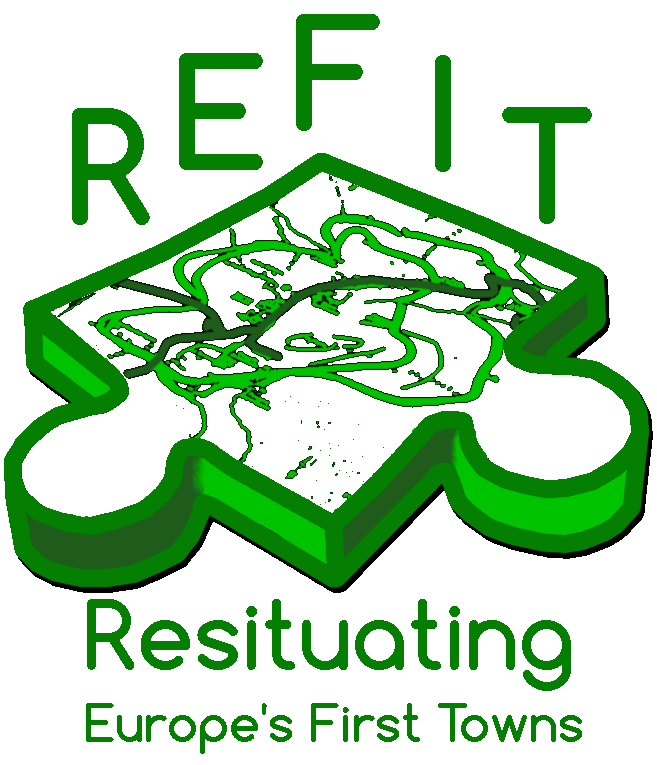
Associated Project Partners
Gloucestershire Wildlife Trust
Gloucestershire Wildlife Trust was founded in 1961 to protect wildlife populations in the county, and is one of 47 Wildlife Trusts in the UK. The Trust has over 27,000 members with its wildlife conservation initiatives delivered by a team of professional staff and over 500 volunteers. The Trust’s aim is to preserve, recreate and reconnect Gloucestershire’s wild places believing strongly that nature matters, not only in its own right, but for the huge benefits it brings. The Trust are owners of Greystones Nature Reserve, which includes the oppidum of Salmonsbury, and are keen to encourage people to understand and appreciate the significance of Salmonsbury’s past whilst managing a working farm under the challenges of its natural and historic significance.

Cotswold Archaeology
Parc naturel régional du Morvan
Established in 1989, Cotswold Archaeology is a Top Four supplier of professional heritage services in the UK. Employing over 180 professional staff CA provide expert, bespoke solutions for both private and public sector clients nationwide. Cotswold Archaeology regularly publish and report on important archaeological findings, adding to the wider circle of education and information available about Heritage in the UK.

Réseau des Grands Sites de France
The Réseau des Grands Sites de France (Network of the Great Sites of France) brings together exceptional landscapes, which are recognised by all and which are fragile. These sites have in common the fact that, for the majority, their territory is classified under the law of 2nd May 1930 on "the protection of natural monuments and sites of artistic, historical, scientific, legendary or picturesque interest". The implementation of this legislation is the responsibility of the State and is one of the tasks of the Minister of Ecology and Sustainable Development.
Recognised as a badge of excellence, the label Grand Site de France was created by the State in 2003 to recognize the quality of the management of these protected landscapes, consistent with the spirit of the place and the principles of sustainable development. With associated space for sharing practical experience and the exchange of know-how, the Réseau des Grands Sites de France brings together the local governments and communities that are actively engaged in this process. These 40 communities extend over 349 communes (parishes), 34 departments and 16 regions; they have about 900,000 inhabitants and experience more than 32 million annual visitors. Of these communities, 14 have already received the label Grand Site de France from the Ministry of Ecology, a title which is awarded for six years on the basis of a draft for the conservation, management and enhancement of the site.

Parc naturel régional du Morvan
Morvan is a mountain range that occupies the centre of the Burgundy region. It is a territory with a strong identity and a rich natural and cultural heritage, but has been undergoing profound social and economic change since the beginning of the twentieth century: rural exodus; massive casualties from the First World War; radical change in agricultural and forestry production systems in the last half-century; and the emergence of a tourist economy.
Created by law in 1967, Parcs naturels régionaux (regional natural parks) contribute to environmental protection policy and land use planning in France. To this end, they are intended to be experimental territories for the sustainable development of rural areas. They constitute a privileged framework of public action by public authorities in favour of the preservation of landscapes and their natural and cultural heritage. Local governments adhering to the Park Charter apply the guidelines and measures of the charter in the exercise of their powers. In this regard, the Parcs naturels régionaux are the first French legislative initiative on sustainable land management.
Founded in 1970, the Regional Natural Park of Morvan brings together 117 member municipalities and six partner cities, an area of 280,000 hectares and a population of 70,000 inhabitants.

Diputación Provincial de Ávila
For more than two decades the Diputación Provincial de Ávila (Local Government of Ávila) has been developing an outstanding project focused on managing, conserving and presenting the archaeological heritage of the area to the public. The most important works have focused on the study and dissemination of knowledge regarding Late Iron Age oppida (Ulaca, Las Cogotas, Chamartín, El Raso). As part of this process, the Diputación Provincial de Ávila has built a tourist route around the sites and the verracos (the famous prehistoric stone sculptures depicting bulls and pigs) that marked and protected pastures and Iron Age settlements. The aim of the work (Castros y Verracos) is threefold: to disseminate information to today's society; to ensure responsible and qualified tourism; and to promote the development and participation of rural communities linked to these major archaeological sites.

